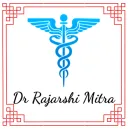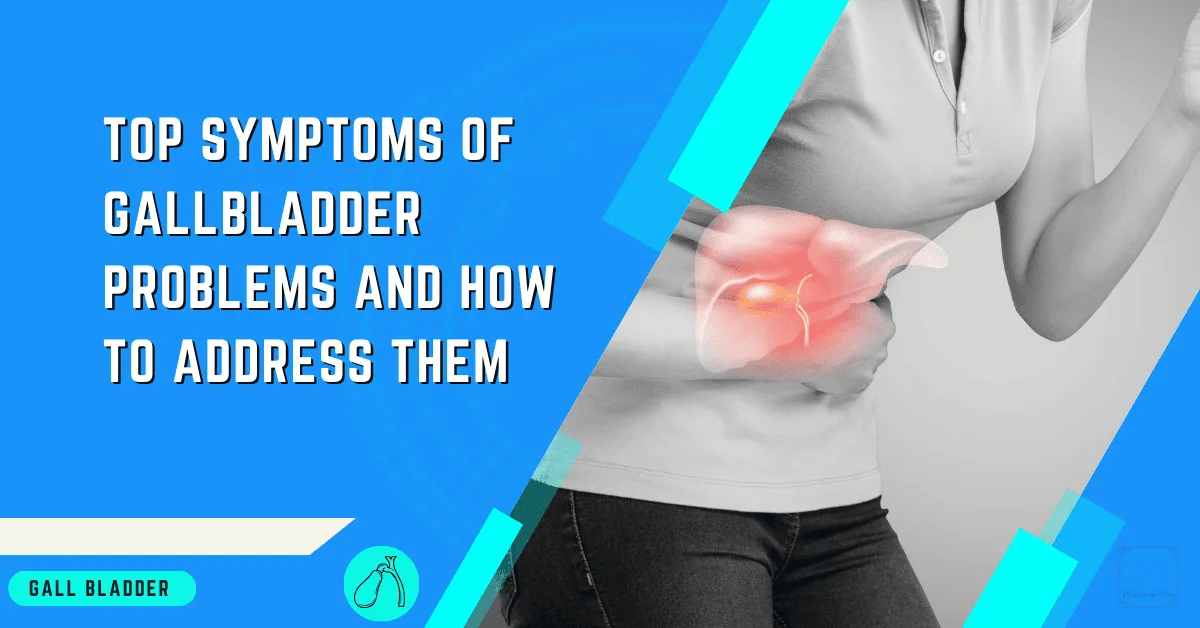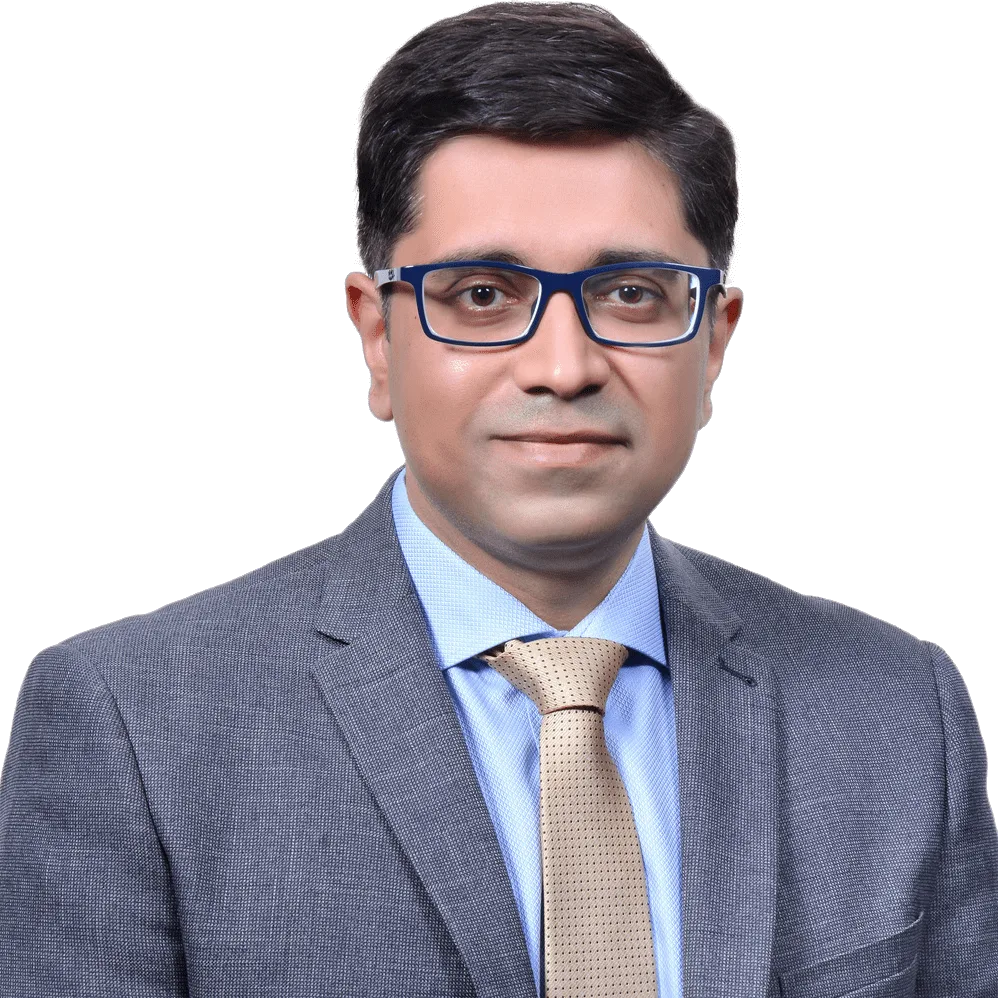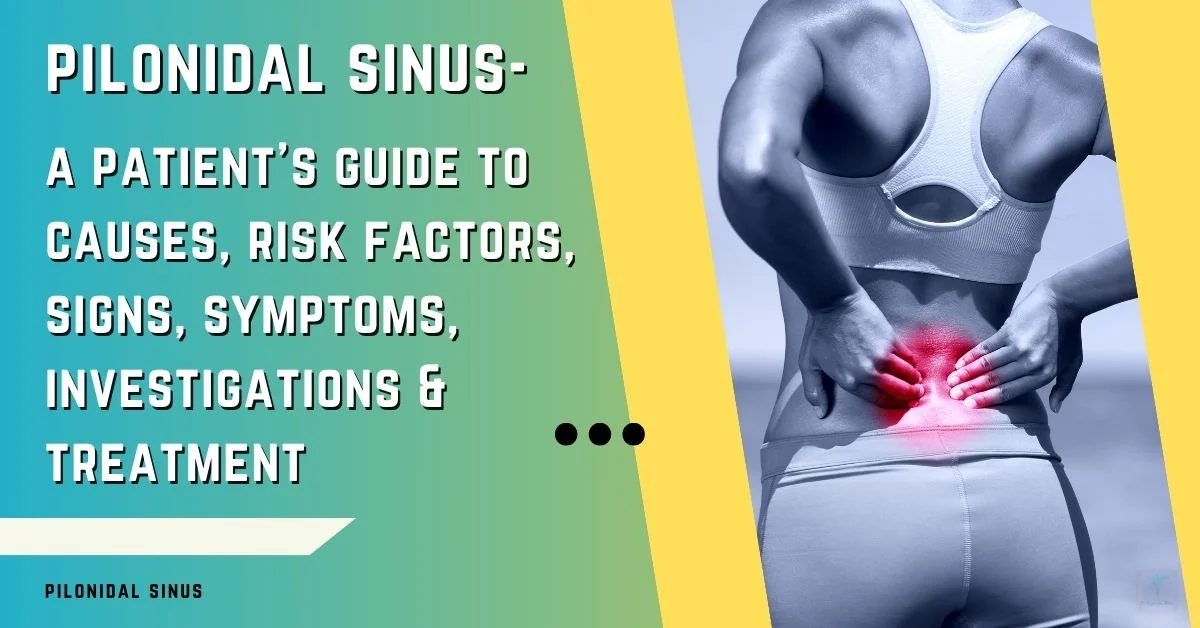The gallbladder, though small, plays a vital role in our digestive process. When problems arise, they can manifest as acute discomfort or persistent pain, often leading individuals to seek medical attention.
The most common symptoms include abdominal pain, particularly in the upper right quadrant, back pain between the shoulders, and nausea. These signs may indicate the presence of gallstones or inflammation, conditions that are not only painful but can also affect your overall well-being.
As you navigate these health challenges, remember that you are not alone; many share this journey. A healthcare provider can offer diagnoses and tailored treatments to alleviate discomfort. From dietary adjustments to potential surgical options, there are pathways to not only manage symptoms but also to restore your quality of life.
Key Takeaways
- Abdominal pain in the upper right quadrant is a common symptom of gallbladder problems.
- Prompt consultation with a medical professional is important for appropriate management of gallbladder inflammation and infection.
- Digestive irregularities such as bloating and changes in bowel movements may indicate underlying gallbladder issues.
- Surgical removal of the gallbladder may be necessary to address gallstone-related complications, and collaboration with healthcare professionals is crucial for assessment and treatment options.
Recognizing Gallbladder Symptoms
Identifying the signs of gallbladder issues is essential for timely diagnosis and treatment, with abdominal discomfort and digestive disturbances being primary indicators. A prevalent gallbladder symptom is pain in the upper right quadrant of the abdomen, often indicative of biliary pain or inflammation of the gallbladder.
This discomfort may radiate to areas below the breastbone or to the back between the shoulder blades, and even to the right shoulder, reflecting the diverse presentation of gallbladder pain.
Recognizing these Signs of Gallbladder distress allows individuals to seek the necessary medical evaluation, fostering a sense of community through shared experiences and understanding. Acute cholecystitis, an intense and steady pain in the upper abdominal region, underscores the urgency of addressing gallbladder symptoms promptly. Accompanying nausea and vomiting further signify the potential severity of gallbladder conditions.
Healthcare professionals emphasize that although abdominal pain is a common symptom of gallbladder problems, the clinical picture must be corroborated by evidence-based assessments, such as imaging and laboratory tests, to confirm the diagnosis. Understanding the various options available can aid in a timely and accurate diagnosis, which is crucial for effective treatment. A gallbladder diagnostic tests overview typically includes ultrasound examinations, HIDA scans, and blood tests to assess not only the structure but also the function of the gallbladder, ultimately guiding the clinician in their management plan.
This rigorous approach ensures that treatment, whether lifestyle modification or surgical intervention, is tailored to the unique needs of each individual, reaffirming their belonging in a community committed to health and well-being.
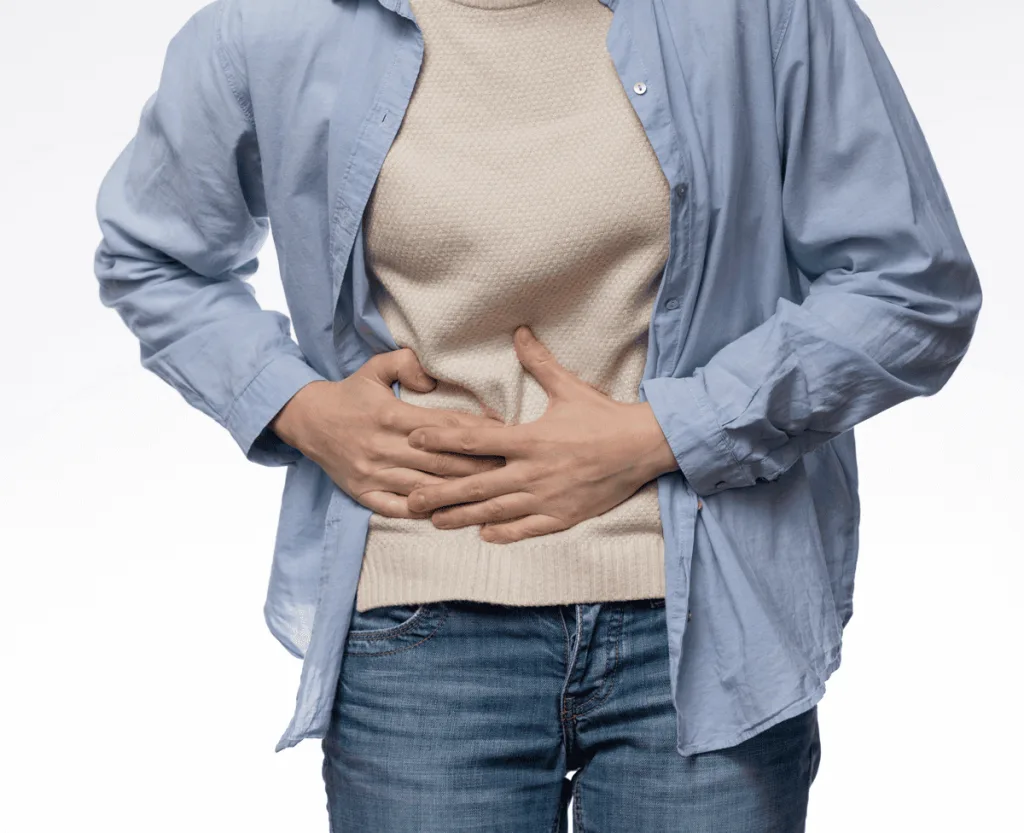
Understanding Gallstones Impact
How do gallstones form, and what implications do they have for gallbladder function and overall health?
Gallstones are hardened deposits that form within the gallbladder, often comprising cholesterol or bilirubin. These deposits can cause significant disruption to the normal function of the gallbladder and bile ducts.
When gallstones develop, they can lead to a bile duct block, resulting in bile accumulation and inflammation. Symptoms typically manifest as pain in the upper right side of the abdomen. If left untreated, gallstones can lead to more severe complications, including an increased risk of gallbladder cancer.
Professional management of gallstones involves assessing the extent of the condition and providing appropriate treatment options. These can range from conservative management, such as dietary modifications, to more invasive procedures like cholecystectomy or the surgical removal of the gallbladder.
Here is a table summarizing the impact of gallstones:
| Aspect | Impact of Gallstones |
|---|---|
| Formation | Hardened deposits of cholesterol or bilirubin |
| Symptoms | Pain in the upper right side, inflammation |
| Complications | Bile duct block, increased cancer risk |
| Treatment Options | Dietary changes, medication, cholecystectomy |
Understanding the implications of gallstones is essential for individuals seeking to maintain their sense of belonging within their health journey. Through evidence-based information, patients can collaborate effectively with healthcare providers to manage their condition.
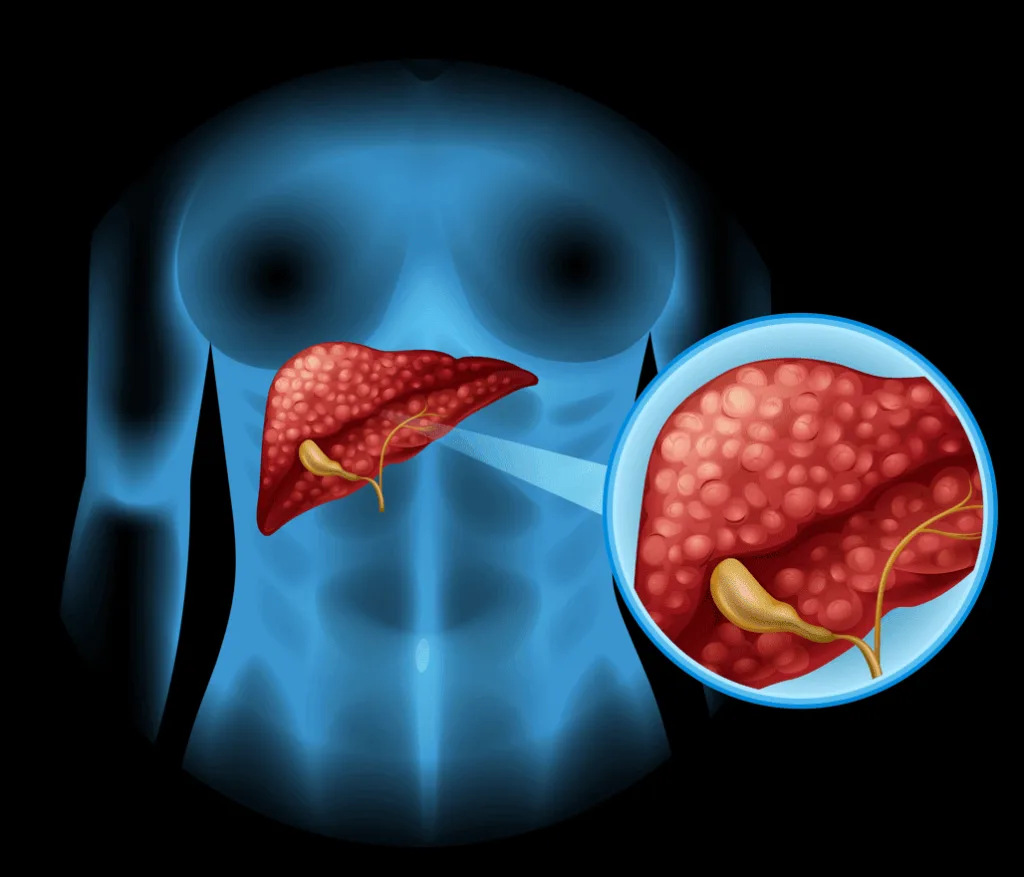
Identifying Inflammation Signs
Recognizing the signs of gallbladder inflammation is crucial for timely medical intervention and can mitigate the risk of complications. Gallbladder inflammation, or cholecystitis, manifests in a spectrum of clinical presentations, depending on whether the condition is acute or chronic.
When diagnosing an inflamed gallbladder, medical professionals look for evidence-based indicators that commonly point to inflammation in the gallbladder.
Common symptoms associated with gallbladder inflammation include:
- Severe Painin the upper right or central part of the abdominal area, which may radiate to the back or right shoulder.
- Fever and chillsindicating the body’s immune response to inflammation or infection.
- Nausea and Vomitingwhich can accompany the pain and are indicative of the digestive system’s distress.
Chronic inflammation of the gallbladder may not present with as intense pain as the acute form but is often characterized by repeated episodes or a dull ache in the abdominal area. It is essential for anyone experiencing a symptom of a gallbladder issue to seek consultation with a medical professional.
Prompt identification of the signs and symptoms of gallbladder inflammation allows for appropriate management, potentially averting the progression to more serious conditions.
Addressing Digestive Irregularities
In the context of gallbladder issues, digestive irregularities such as bloating, indigestion, and changes in bowel movements often signal underlying problems that require medical attention. Gallbladder problems can significantly disrupt the digestive system, leading to discomfort and abdominal pain.
The gallbladder’s role is to store bile, which helps with digestion, particularly in breaking down fats. When gallstones blocking the flow of bile occur, the interruption can result in painful episodes and digestive inconsistencies.
Addressing these symptoms often involves a multifaceted approach. Dietary modifications are a common cause for improvement, as they can alleviate the burden on the digestive system. Introducing high-fiber foods and reducing fatty intake are initial steps.
If gallstones are present, treatment may include medication to dissolve them or surgical intervention, such as a laparoscopic cholecystectomy, to remove the gallbladder.
In cases where the gallbladder has been removed, the liver continues to produce bile, but the timed release into the small intestine to help with digestion is absent. Hence, patients are advised to modify their diet post-surgery to manage the changes in digestion.
Seeking the guidance of healthcare professionals remains crucial in both the diagnosis and the management of gallbladder-related digestive irregularities.
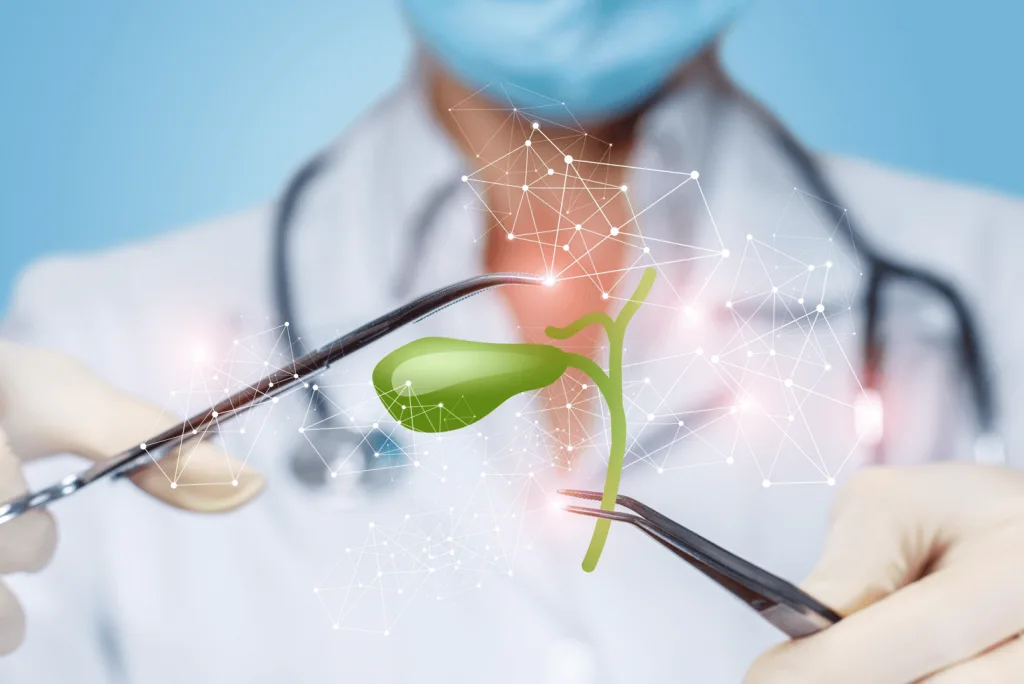
Considering Surgical Interventions
When non-invasive methods fail to alleviate gallbladder issues, surgical interventions, such as a cholecystectomy, may become necessary.
Gallbladder removal surgery is the definitive treatment for both acute and chronic gallbladder disease, particularly when the condition has led to severe gallbladder complications. Risk factors include the presence of gallstones that block the flow of bile, leading to pain and infection.
A doctor may recommend gallbladder surgery after a thorough evaluation, which typically involves imaging scans like an ultrasound or CT scan.
If you experience symptoms suggestive of a severe gallbladder problem, it’s crucial to seek immediate medical attention. Your healthcare provider may recommend surgery if other treatments have not provided relief or if there’s a high risk of complications.
Here are some key points to consider:
- Surgical OptionsLaparoscopic cholecystectomy is the most common and minimally invasive procedure.
- Safety and EfficacySurgery is a safe and effective way to prevent future gallbladder attacks and potential emergencies.
- Recovery and CarePost-operative care is essential, and most patients can return to their normal activities within weeks.
Implementing Dietary Adjustments
Adjusting one’s diet is a critical step in managing and preventing gallbladder issues, particularly through the adoption of a low-fat diet which can significantly reduce the risk of gallstone formation.
Incorporating high-fiber foods such as fruits, vegetables, and whole grains aids in the digestive process and can help maintain gallbladder health.
It is also crucial for patients to identify and avoid foods that trigger gallbladder symptoms, thereby minimizing discomfort and potential complications.
Low-Fat Diet Benefits
A majority of gallbladder issues can be effectively managed by adopting a low-fat diet, which minimizes the organ’s need to process large amounts of dietary fat.
This approach enhances gallbladder health by lessening the risk of developing gallstones, which can exist without causing symptoms until they obstruct bile flow. Since the gallbladder stores bile that emulsifies fats, a low-fat diet ensures its function is not overburdened.
- Minimize Gallbladder StressReducing dietary fat intake decreases the gallbladder’s workload, potentially preventing inflammation.
- Reduce Gallstone RiskA low-fat diet can help reduce the risk of gallstone formation, which is correlated with high cholesterol levels.
- Support Digestive ProcessesAdapting diet and lifestyle to include more fiber and less fat aids in maintaining gallbladder function and overall digestive health.
High-Fiber Foods Inclusion
Incorporating high-fiber foods into one’s diet is a pivotal strategy for mitigating gallbladder issues and enhancing digestive health. High-fiber foods inclusion is instrumental in managing symptoms such as abdominal pain, which is often associated with gallbladder problems.
By promoting regular bowel movements, these dietary fibers help reduce the concentration of cholesterol in bile, thereby decreasing the risk of developing gallstones. It’s important to note that in severe cases, gallstones can lead to significant complications.
A deliberate adjustment to include more fruits, vegetables, and whole grains can be beneficial. These adjustments not only support gallbladder health but also contribute to maintaining a healthy weight, which is a protective factor against gallbladder disease.
Embracing a high-fiber diet is a collective step towards mitigating the risk and improving overall well-being.

Avoiding Trigger Foods
Building on the individual’s dietary regimen, identifying and avoiding trigger foods is a critical step in managing gallbladder symptoms and promoting long-term digestive health.
People with gallstones or at risk of gallbladder disease can experience a significant improvement by implementing dietary adjustments, specifically by avoiding trigger foods that may cause symptoms. Symptomatic gallstones can lead to discomfort, and certain dietary choices can exacerbate these conditions.
- Reduce High-Fat and Greasy FoodsMinimize intake to prevent common gallbladder side effects.
- Avoid Rapid Weight LossAim for gradual body weight reduction to lower the risk of gallstone formation.
- Limit Cholesterol-Rich FoodsTo maintain gallbladder health and potentially prevent gallstones without surgery.
Conclusion
When you think about gallbladder problems, picture them like a sudden storm messing up the peaceful process of your digestion. They come out as different signals that need quick and smart handling. The steps we take can be as minor as tweaking your diet or as major as surgery. The specific treatment depends on how bad and in what way you’re impacted by the health trouble.
Prompt and appropriate response to these signs is paramount in navigating the turbulent waters of gallbladder disease, ensuring the restoration of gastrointestinal harmony.
Frequently Asked Questions
What Are the First Signs of a Bad Gallbladder?
The initial indicators of gallbladder distress often include sharp pain indicative of biliary colic, abdominal bloating, and digestive problems. Chronic cholecystitis may cause fever, chills, jaundice-yellowing of the eyes and skin, unusual stools, and nausea with vomiting.
What Is the Best Home Remedy for Gallbladder Attacks?
Like a soothing balm, warm compresses can ease gallbladder discomfort. Incorporating turmeric intake, herbal infusions, and gut-friendly probiotics into one’s diet may also mitigate attacks.
How Can I Make My Gallbladder Healthy Again?
To promote gallbladder health, adhere to Gallbladder Diet Tips, ensuring frequent meals with Healthy Fats Intake. Exercise Regularity, Herbal Supplementation, and Stress Management aid in Bile Flow Improvement and Nutrient Absorption. Avoid Crash Diets; consider Preventative Ultrasounds.
Does Drinking Lots of Water Help Gallbladder Pain?
Adequate hydration through increased water intake can be beneficial for gallbladder pain management. Maintaining optimal hydration levels with daily water consumption is considered a supportive fluid therapy for enhancing gallbladder function.
